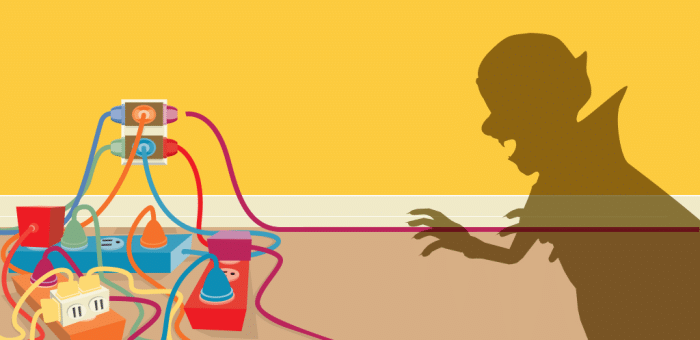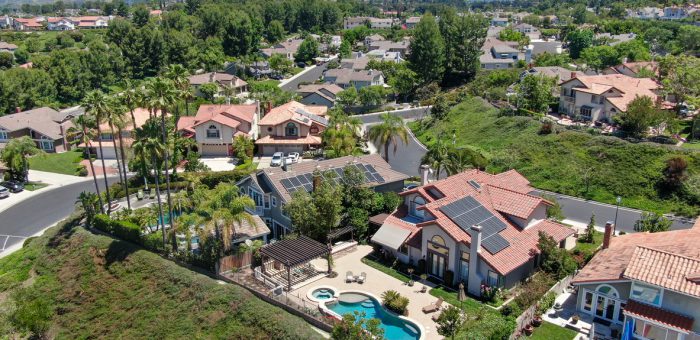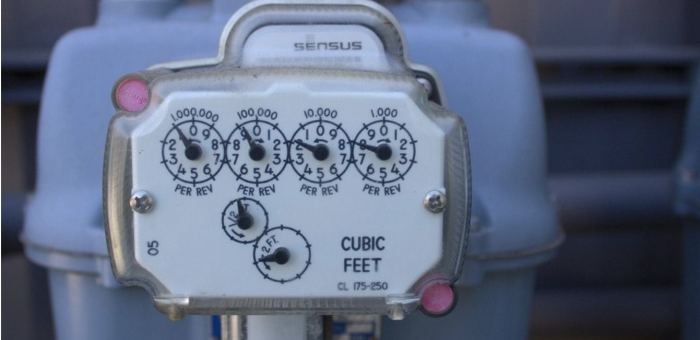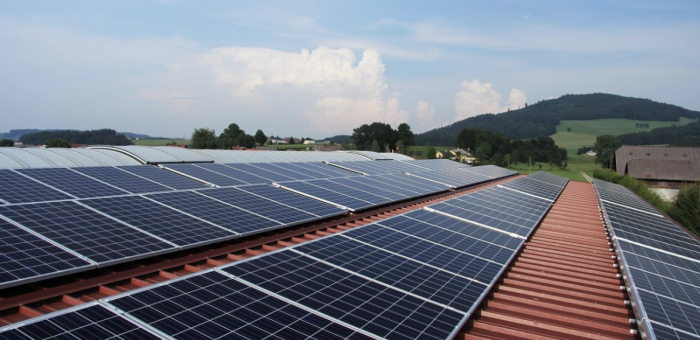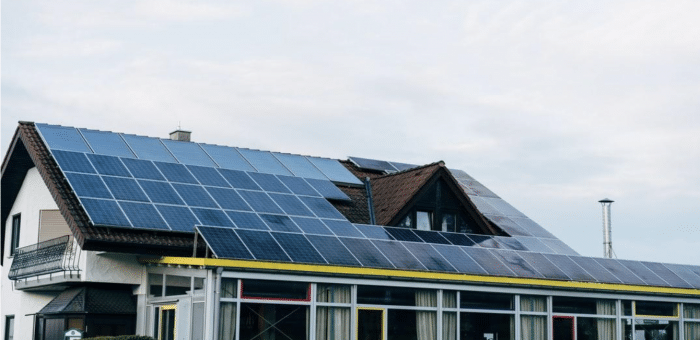You know the moment when you wake up, drenched in sweat, and realize you waited too long to turn on your air conditioning?
We’ve all been there. It’s easy to justify leaving your air conditioning off as the temperatures creep up through the 70s, but eventually, we all reach a point where it’s just not worth it anymore.
We’ll go into more detail below on all the factors that determine the impact of central air.

What is Central Air?
Click on a section to skip directly to it:
To put it simply, central air specifically refers to a cooling system.
A central air conditioning system is used to cool your entire home, compared to a window air conditioner that only cools a specific area or room of your home.
Central air, and air conditioning in general, is a modern luxury that definitely did not come to exist overnight.
In 1947, for the first time, homeowners could enjoy air conditioning without having to make expensive upgrades.
By the late 1960s, most new homes had central air conditioning.
Today, air conditioning is now in nearly 100 million American homes, representing 87 percent of all households.
How Does Central Air Operate?
Central air conditioners circulate cool air through a system of supply and return ducts.
A central AC uses a loop of refrigerated and cycled air to keep you and yours cool once the temperatures heat up.
Central air has three parts that work together to cool your Texas home or business:
- Condenser
- Compressor
- Evaporator coils
The condenser and compressor are both located outside of your home in a separate unit.
These, along with the evaporator coils, work in a closed loop that cycles refrigerants.
From there, it:
- Pulls the hot air from your home in
- Rejects the heat
- Pulls the cooled air back through your vents
Central air conditioning units use two different types of coils to cool your home.
The process essentially works like this:
- Supply ducts and registers (think openings in the walls, floors, or ceilings covered by grills) carry cooled air from the air conditioner to the home.
- This cooled air becomes warmer as it circulates through the home.
- The now warm air then flows back to the central air conditioner through return ducts and registers.
7 Factors that Can Affect How Much it Costs to Run Central Air
When it’s hot out, running your central air conditioning can easily account for more than half of your electric bill.
If you’re on a fixed or tight budget, estimating your monthly bill with central air can help you find strategies to minimize those costs.
The first thing to understand is that there is no cut and dry, one-size-fits-all estimate for how much it costs to run central air in any Texas household or business.
The cost to run central air will vary from home to home (and business to business) because several factors need to be considered.
Keep reading to see how each of these elements comes into play when you’re estimating the cost to run AC in your home or business.
Factor #1: Size of Your Space
Energy use varies greatly by the size of your space.
One of the biggest determining factors in how much it costs to run central air in your household or business is the size of your home.
Generally speaking, the larger your home is, the higher your electric bill will be.
To calculate your estimated monthly electricity bill (and how much that may increase with central air), you will need the following information:
- Average square footage of your home or business
- Average electricity rate in your Texas city
- The average energy use of households in your Texas city
Once you have the above metrics, you can use the following formula to calculate the cost to run AC and what your estimated monthly bill may be:
(avg. consumption x avg. rate) / avg sq ft = price per square foot
Factor #2: Electricity Rates
Using this formula, one of the three major factors is the electricity rate that you’re paying (or that is average for your city).
Knowing this information can give you the best answer to the question, “How much does it cost to run AC?”
Now, depending on exactly where in Texas you live, you may have the chance to choose what Retail Electric Provider (REP) you want to buy your electricity from.
The reason you have the chance to choose is because of something called deregulation, or retail electric choice.
Retail electric choice is a big win if you live in a deregulated area.
It could give you the ability to:
- Shop for the best electricity rate in your area
- Compare different REPs
- Choose a plan based on your specific energy needs
- Take advantage of incentivized offers
- Switch providers and plans at any time
- Most importantly, save money
Deregulation allows Retail Electricity Providers (REPs) to offer various rates, plan types, and different levels of flexibility to many consumers.
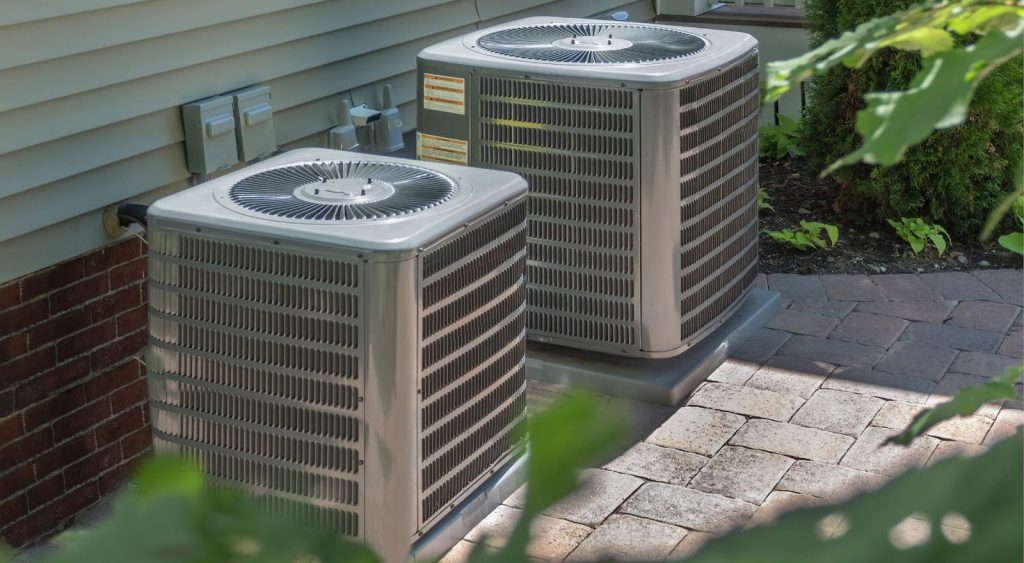
Factor #3: Your Central Air Unit
Several aspects of your central air unit can affect its energy usage.
These include:
- The size of your central AC unit
- How old is your central AC unit is
- Your unit’s energy efficiency rating
- How often do you run maintenance on your central AC unit
- Your location
- Your thermostat settings
- The quality of your installation
- How long have you run your central AC for
When you know the answers to these questions, you’ll have a much clearer picture of how much it costs to run central air in your Texas home or business.
Read on for a deep dive into how each of these aspects factors into your central AC cost.
Size
Proper sizing and installation are key elements in determining central air efficiency.
Too large a unit will not adequately remove humidity, but too small a unit will not be able to attain and sustain a comfortable temperature on the hottest days.
Improper unit location, lack of insulation, and improper duct installation can all greatly diminish efficiency.
Age
Sadly, no matter how often you clean and maintain your central AC unit, all things wear out over time.
This is why the age of your AC unit is a big factor in how much it will cost you to run central air in your Texas home or business.
Older central air units won’t function as efficiently.
Here are some signs to look out for that may signal you need a replacement:
- Poor airflow
- Inaccurate thermostat
- Bad odors
- Humidity in the home
- Freon or water leaks
- High or rising electric bills
The “lifespan” of a central air conditioner is about 15 to 20 years.
Energy Efficiency Rating
When buying an air conditioner, look for a model with high efficiency.
Central air conditioners are rated according to their seasonal energy efficiency ratio (SEER).
SEER indicates the relative amount of energy needed to provide a specific cooling output.
Many older systems have SEER ratings of 6 or less.
The higher the SEER rating, the less electrical energy your air conditioner uses to cool your home.
A central AC unit (that was installed properly) with a higher SEER will cost less to cool a home versus a unit with a lower SEER rating under the same conditions.
Purchasing an air conditioner with a higher SEER rating could be more expensive upfront, but could save you more money in the long run on your electricity bill.
In 2015, The Department of Energy (DOE) updated energy conservation standards for central air conditioners.
For the first time, the new standards vary regionally, impacting customers living in the North, Southeast, and Southwest regions of the U.S. differently.
In Texas (Southeast), split-system central air conditioners installed on or after January 1, 2015, must have a seasonal energy efficiency ratio (SEER) of no less than 14.
Proper and Regular Maintenance
To keep the central air conditioner working properly, regular maintenance is required.
Meaning you’ll need to:
- Replace the filters regularly
- Oil the fan motor
- Keep the parts clean and free of debris
You’ll also need to turn off the unit and use a hose to clean the cooling fins.
This process will remove any dirt, grass clippings, leaves, and other debris from the unit.
Cleaning the fins needs to be done at least once a year. Otherwise, the fins of the condenser could become clogged with debris and lessen the cooling capacity.
Factor #4: Your Location (Climate)
In the summer or during bouts of extreme heat and high humidity, your air conditioner works harder to keep your home cool.
These climate conditions will affect how much it costs to run the AC.
When your AC works harder, unfortunately, so will your wallet.
Your location and its climate are big factors in determining how hard your central air needs to work to keep you cool.
For example, someone who lives in a hot but dry climate will most likely pay less for central air than someone who lives in a hot and humid climate.
Factor #5: Thermostat Settings
How you program or set your thermostat can have a huge effect on how much it costs to run central air in your home or business.
Keeping the temperatures lower for longer will cost you more while setting them higher for longer periods will keep costs down.
[ctafirst]
Factor #6: Quality of Your Insulation
If your air conditioner is installed correctly, it will perform efficiently for years with only minor routine maintenance.
However, many air conditioners are not installed correctly.
Because of this, even modern energy-efficient air conditioners can perform almost as poorly as older, more inefficient models.
When you are installing a new central AC unit, make sure that:
- There is adequate indoor space for the installation, maintenance, and repair of the new system
- It includes an access door in the furnace or duct to provide a way to clean the evaporator coil
- There are enough supply registers to deliver cool air and enough return air registers to carry warm house air back to the air conditioner
- That the newly installed air conditioner has the exact refrigerant charge and airflow rate specified by the manufacturer
- That the thermostat is away from heat sources (ie. windows or supply registers)
Factor #7: Amount of Time Central Air Runs
Ask yourself the following questions:
- Is your unit running all day and night?
- Do you open windows at night to reduce run time?
The answers to these questions are crucial in determining the amount of time you run your central air unit on a daily basis.
During a typically hot Texas day, your central air conditioner should be running almost continuously throughout the day.
This ensures the temperature inside your home will stay closest to the setting on your thermostat.
In General, How Much Does Central Air Cost to Run?
The amount you pay for electricity will directly affect how much it will cost you to run central air.
Retail electric providers typically charge you electricity by the kilowatt-hour (kWh).
Here in the U.S., the average residential cost per kWh is 12 cents and a typical U.S. household uses about 914 kWh a month of electricity.
In Texas, the average price of electricity is 11.97 cents per kWh.
Not sure exactly how much you are paying per kWh? Just check with your REP or look at your last bill statement.
(If your cost per kilowatt-hour is not 11.97 cents per kWh, just change the numbers below to calculate your cost to run central air in your home.)
An average central air conditioner will use between 3000-5000 watts of power for around nine hours a day during those hot summer months.
To calculate the estimated cost of central air for your Texas household or business, first follow these steps:
- First, you’ll need to calculate the amps drawn by your central AC unit.
This will depend on your unit’s size and SEER rating.
For example:- 2-ton central AC = 15 amps
- 3-ton central AC = 18 amps
- 4-ton central AC = 21 amps
- Next, calculate the wattage your central AC consumes.
A standard power plug for a central air conditioner is a 240-volts power outlet. - Multiply the amps by 240 watts.
- To find the kWh, divide by 1,000.
Let’s break it down for the Matt family:
The Matt family recently moved to Katy, Texas.
They purchased a 16 SEER central air conditioner. A 2-ton AC with a 16 SEER rating is approximately 15 amps.
To find their wattage, they’ll need to multiply their central AC’s amps by 240 watts.
15 amps x 240 volts = 3,600 watts
Now, to find the kWh, they’ll need to divide 3,600 watts by 1,000.
3,600 divided by 1,000 = 3.6 kilowatts
Using these steps, the Matts found out that their central AC cost per hour is 3.6 kWh.
Cost to Run Central Air Conditioner per Day
Now, we can take this number and use it to give the Matt family a better idea of the cost to run central air in their home per day.
When calculating the cost per day, the next piece of information you need is the amount you’re paying per kWh.
3.6 kilowatts used per hour x 11.97 cents (average cost per kWh in Texas) = 43.09 cents an hour.
Knowing this, we can estimate the cost to a run central conditioner in Texas per day and per month.
We’ll take the cost to run central AC per hour (43 cents) x (12 hours a day) let’s say from 8 a.m. to 8 p.m. = $5.16 per day
Doesn’t seem too bad, right?
Knowing this, we can now calculate how much central air costs per month.
How Much is Central Air per Month?
We already know that the Matt family’s central AC unit uses 3.6 kWh.
And we’ve estimated that they will pay $5.16 per day to run their central air.
Now we can get to the big question: How much does central air cost per month?
To answer “How much does AC cost per month?” for the Matt family, let’s assume it’s the hottest month of the year and they are running their AC every day.
$5.16 per day x 30 days = $154.80 per month to run their air conditioner for 12 hours per day.
That price may fit into your budget on its own, but tack that on to the rest of your normal electricity usage and you could find yourself with a pretty hefty monthly bill.
How Much to Run Central Air Conditioner Compared to Other Cooling Systems
You’re a smart consumer. You always like to get a few opinions before making a big purchase.
So, naturally, you’re curious about the cost of running central air in your Texas home or business compared to other options.
Below, we’ll compare a few alternatives to central air.
Cost to Run Air Conditioner: Central Air vs. Window Unit
Without a doubt, central air will cost you more than a window unit.
But central air and a window air conditioning unit serve two very different purposes.
It’s almost like comparing apples to oranges.
There are a few things to consider when looking at the cost differences:
- The size of the area you’re looking to cool
- Energy usage
- Cost of unit installations
- The condition of your existing HVAC system
Generally speaking, if you plan (or hope) to cool three or more rooms in your home, the most cost-effective and energy-efficient choice is central air.
Cost to Run AC: Central Air vs. Split System
A central air conditioner is either a split-system unit or a packaged unit.
The difference between the two is exactly what you’d expect.
In a split-system central air conditioner, an outdoor metal cabinet contains the condenser and compressor, and an indoor cabinet contains the evaporator.
In a packaged central air conditioner, the…
- Evaporator
- Condenser
- Compressor
…are all located in one cabinet, which usually is placed on a roof or a concrete slab next to the house’s foundation.
Packaged air conditioners often include electric heating coils or a natural gas furnace.
This combination of an air conditioner and central heater eliminates the need for a separate furnace indoors.
Ultimately, the cost difference, and which is best for you will depend on:
- Your home
- Individual heating and cooling needs
- Your budget

How to Reduce Your Central AC Monthly Cost
There are ways to reduce the monthly costs of running central air.
If you’re trying to reduce your central air usage or have your electricity bill come in under budget, make sure to:
- Use a smart thermostat and program a schedule
- Make sure to keep the ducts clean and airflow clear
- Schedule regular maintenance visits
- Change air filters
- Retrofit your AC unit
- Upgrade to an energy-efficient air conditioner, when possible
More From the Power Wizard Blog
-
Affordable Electric Bill: Power Wizard’s Promise of Protection
Sarah, a proud Texan, knows that everything is bigger in Texas – including the choices when it comes to electricity providers. She’s no stranger to the complexities of deregulated energy markets. With a bustling household, she juggles work, family, and keeping the lights on. But there’s one thing Sarah doesn’t want to juggle: her electric bill. […]
View Article -
Vampire Energy: How Phantom Power Drains Your Wallet and the Environment
Imagine your home filled with silent energy sippers, lurking in the shadows, unnoticed yet constantly draining power and your wallet. Vampire energy, or phantom load, refers to the electricity electronic devices consume, even when turned off or in standby mode. These energy vampires are prevalent in every household and workplace, from the charger left plugged […]
View Article -
The Top Sources of Carbon Emissions in the U.S.
Climate change due to rising global temperature seriously threatens the natural ecosystem. It can result in erratic weather featuring intense drought, heat waves, melting ice caps, warming oceans, and increased storms when left unchecked. As the impact of climate change worsens, the risk of biodiversity loss and human extinction gets bigger. Table of Contents What […]
View Article -
California Solar Tax Credit & Incentives for Residential Rooftop Solar
Are you considering investing in residential solar panels in California? You’re not the only one. Research shows that California was ranked number one out of 50 states in 2022 for solar power generation, with more than 11 million homes powered by the sun. A major reason why solar power is popular statewide is that prices have dropped […]
View Article -
What Should You Include in an Energy Efficiency Audit?
Rising energy costs mean higher electricity bills, and for the average homeowner or business, a little savings each month can add up to extra cash at the end of the year. If you’re looking for ways to reduce your home’s energy consumption, performing a home energy audit is a great place to start. Table of […]
View Article -
How to clean your solar panels
Click on a section to skip directly to it: Why is it important to clean your solar panels?Solar panel cleaning: a step-by-step breakdownMake sure you’re saving the most on your monthly energy bill Have you considered installing a renewable energy source at your home? Power Wizard recommends trying solar energy, which accounts for 3% of […]
View Article -
How to Reduce Your Carbon Emissions
Click on a section to skip directly to it: Why is it necessary to lower carbon emissions?Steps to take to minimize your carbon emissionsReduce your carbon emissions with carbon offsets Carbon emissions refer to the measure of the impact of human activities on global warming and climate change. Every person on the planet contributes, directly […]
View Article -
Solar Energy Credits: Everything You Need to Know
Solar panels are a great way to save money. They are energy efficient and reduce the impact of electricity production on the environment. You can get them installed on the roof of your house to reduce your reliance on the electric grid. Once installed, solar panels help passively produce energy from the sunlight — as […]
View Article

